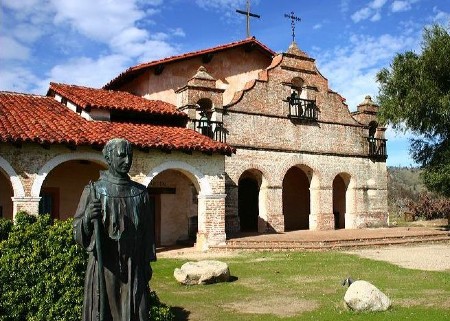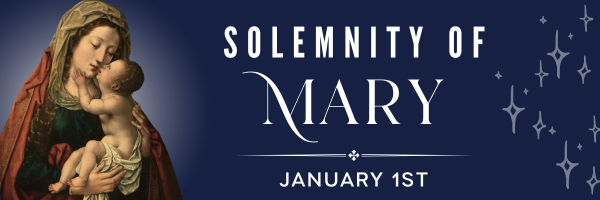
Mission San Antonio de Padua: A Beacon of Faith and Innovation in California's History
FREE Catholic Classes
Mission San Antonio de Padua, founded by Father Junipero Serra on July 14, 1771, stands as one of the most fascinating examples of Spanish mission life in California. Located deep in the Valley of the Oaks in Monterey County, it was the third mission established in the chain of 21 Franciscan missions that stretched along California's coast.Ă‚Â

Image Credit: Wikimedia Commons
Highlights
10/7/2024 (1 year ago)
Published in U.S.
Keywords: Mission, California Mission, Mission San Antonio de Padua, California Catholic, California History
The mission's rich history reflects its role not only as a center of faith but also as a hub of agricultural innovation, trade, and culture.
Early Struggles and Relocation
When Mission San Antonio was first established, it faced significant challenges due to its unstable water supply. The original site, plagued by unpredictable water sources, made it difficult for the missionaries to grow crops and maintain a stable community. By 1773, the mission was relocated about two miles up the Los Robles Valley to a more favorable spot, where the padres built an extensive aqueduct system. This aqueduct brought water from the nearby San Antonio River, enabling irrigation for crops and providing water for bathing and washing. Today, this system is recognized as one of the most complete examples of mission-era water engineering in California.
Growth and Agricultural Success
Once relocated, Mission San Antonio thrived both spiritually and economically. By 1775, adobe dwellings, workshops, storerooms, and a modest church had been constructed. A more significant church structure was completed in 1779, featuring a tiled roof that replaced the earlier thatched structures, which had been prone to fires and water damage. The introduction of these technologies marked a turning point for the mission, providing greater protection for its growing community.
In addition to its spiritual work, the mission became an agricultural powerhouse. The fertile land supported the growth of wheat, barley, corn, and various vegetables. Like other missions, San Antonio also cultivated vineyards and olive groves, producing wine and olive oil that sustained the mission and were used for trade. The mission's livestock operations included large herds of cattle, sheep, and horses. By the early 1800s, Mission San Antonio managed thousands of animals, making it a key player in California's hide and tallow trade. Hides were essential for leather goods, and tallow was used to make soap and candles, both critical for the mission's self-sufficiency and trade economy.
The Great Church and Workshops
The mission's most ambitious construction project took place in 1810 with the building of the Great Church. This impressive structure, measuring 200 feet in length and 40 feet in width, was constructed from six-feet-thick adobe walls. The church, completed and blessed in 1813, stands as one of the most enduring examples of mission architecture and remains a significant part of the reconstructed mission complex today.
Alongside the church, the mission developed a series of workshops dedicated to weaving, carding, spinning, and carpentry. These facilities attested to the mission's self-reliance, as the community produced most of its essential goods. A water-powered gristmill, built in 1806, still stands as a testament to the ingenuity of the mission system. This mill was used to grind grain into flour, supporting the growing mission population and allowing for trade with neighboring missions and settlers.
Cultural and Musical Life
Mission San Antonio was not only an agricultural and architectural marvel but also a center of cultural life. When Padres Pedro Cabot and Juan Bautista Sancho arrived in 1804, they introduced Gregorian chant and figured music, enriching the mission's spiritual and cultural atmosphere. Music became a key component of the mission's religious services, and the integration of Spanish and Indigenous cultural practices helped define the mission's unique identity.
Secularization and Decline
Despite its success, like all California missions, San Antonio faced significant challenges after Mexico's secularization of the missions in 1834. Governor Figueroa declared the mission's lands open for civil use, leading to the redistribution of land and the mission's eventual decline. By the mid-19th century, Mission San Antonio had fallen into disrepair, with many of its buildings deteriorating. It wasn't until the early 20th century that restoration efforts began, largely funded by the Historic Landmarks League and the Hearst Foundation.
Legacy and Restoration
Today, Mission San Antonio de Padua stands as one of the most beautifully restored of California's missions, offering visitors a glimpse into the past while functioning as a spiritual retreat center and museum. The mission church, workshops, and remnants of its water system have been carefully preserved, allowing visitors to explore the rich history of this once-thriving community.
The mission's agricultural and architectural achievements, combined with its role in shaping the religious and cultural life of the region, make it an essential part of California's history. Its legacy endures as a reminder of the blend of faith, innovation, and resilience that characterized the mission system, providing a lasting tribute to the people who built and sustained it.
In conclusion, Mission San Antonio de Padua's remarkable water and irrigation systems, agricultural success, and its architectural splendor demonstrate its significance as a key mission in California. It stands as a living testament to the ingenuity and dedication of the Franciscan missionaries and the Native Americans who worked the land, cultivated crops, and built a vibrant community in the heart of the Valley of the Oaks.
------------------------------------------------------------------------------------------
Your support makes stories like this possible!
Catholic Online is completely donor supported, allowing us to report on what truly is happening in the world, free of charge and uncensored. A donation to Catholic Online will ensure millions around the world can continue to come to our site to find the faith people are so desperately searching for in life.
Join the Movement
When you sign up below, you don't just join an email list - you're joining an entire movement for Free world class Catholic education.
An Urgent Message from Sister Sara – Please Watch
- Advent / Christmas
- 7 Morning Prayers
- Mysteries of the Rosary
- Litany of the Bl. Virgin Mary
- Popular Saints
- Popular Prayers
- Female Saints
- Saint Feast Days by Month
- Stations of the Cross
- St. Francis of Assisi
- St. Michael the Archangel
- The Apostles' Creed
- Unfailing Prayer to St. Anthony
- Pray the Rosary
![]()
Copyright 2026 Catholic Online. All materials contained on this site, whether written, audible or visual are the exclusive property of Catholic Online and are protected under U.S. and International copyright laws, © Copyright 2026 Catholic Online. Any unauthorized use, without prior written consent of Catholic Online is strictly forbidden and prohibited.
Catholic Online is a Project of Your Catholic Voice Foundation, a Not-for-Profit Corporation. Your Catholic Voice Foundation has been granted a recognition of tax exemption under Section 501(c)(3) of the Internal Revenue Code. Federal Tax Identification Number: 81-0596847. Your gift is tax-deductible as allowed by law.







